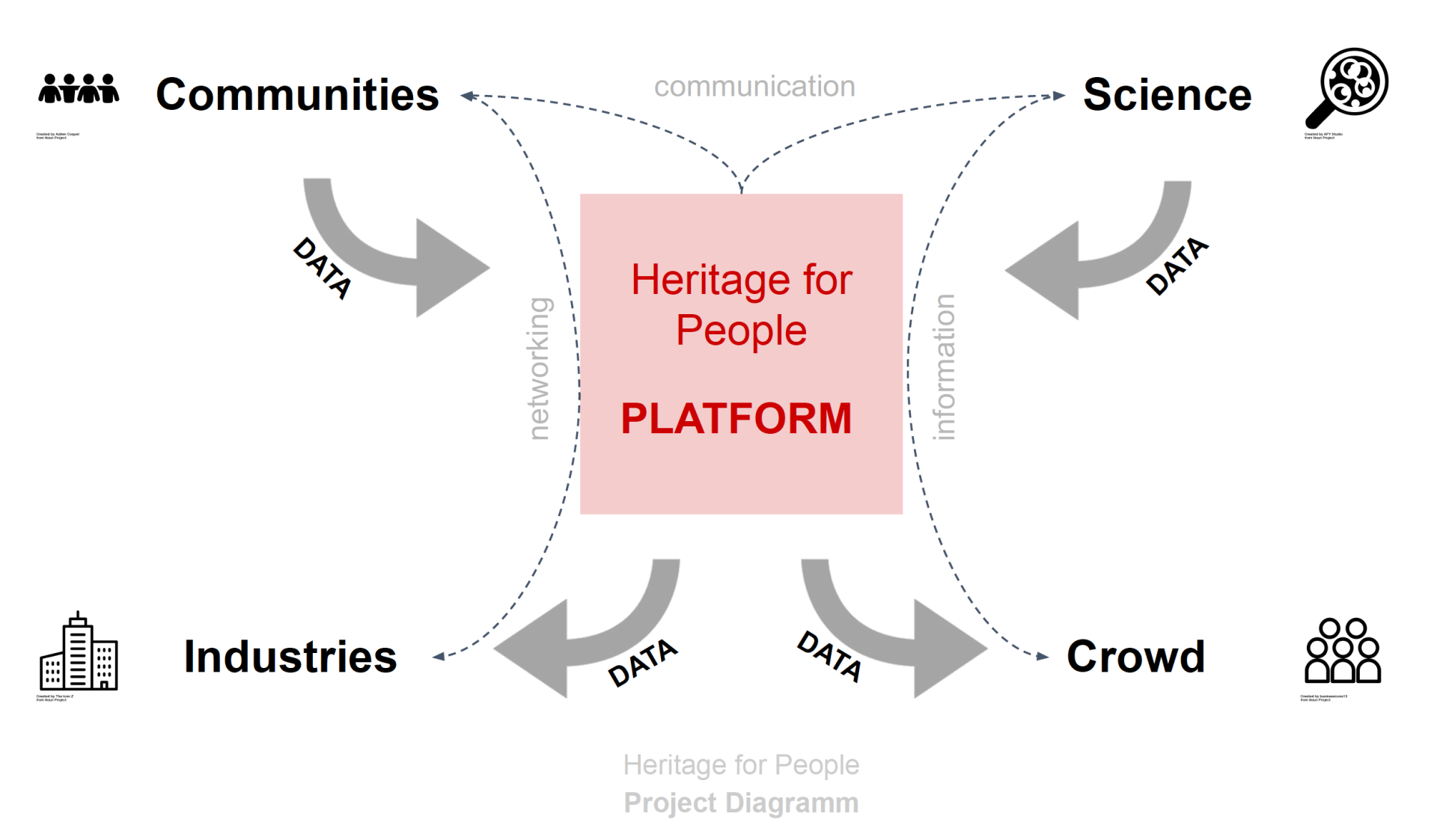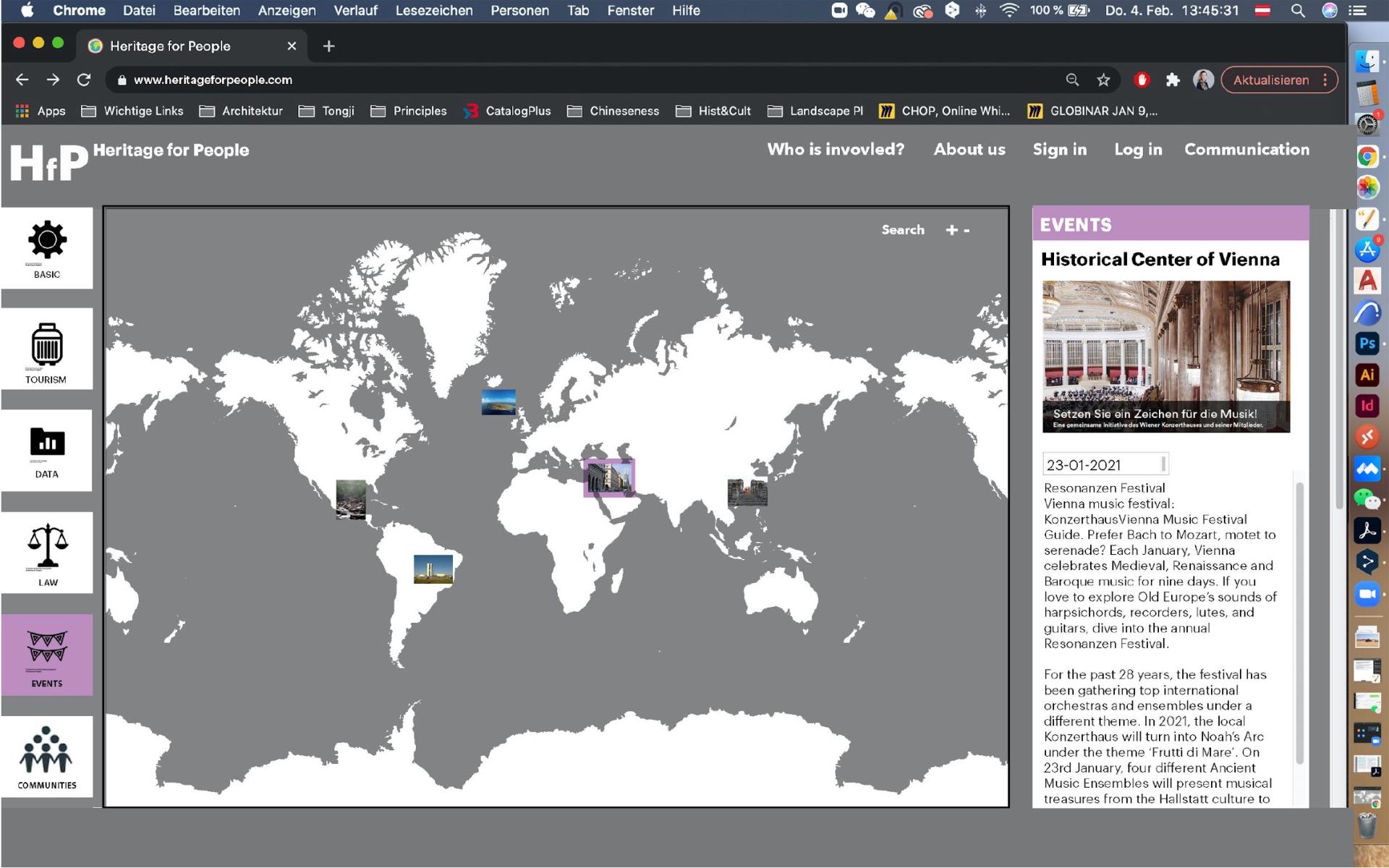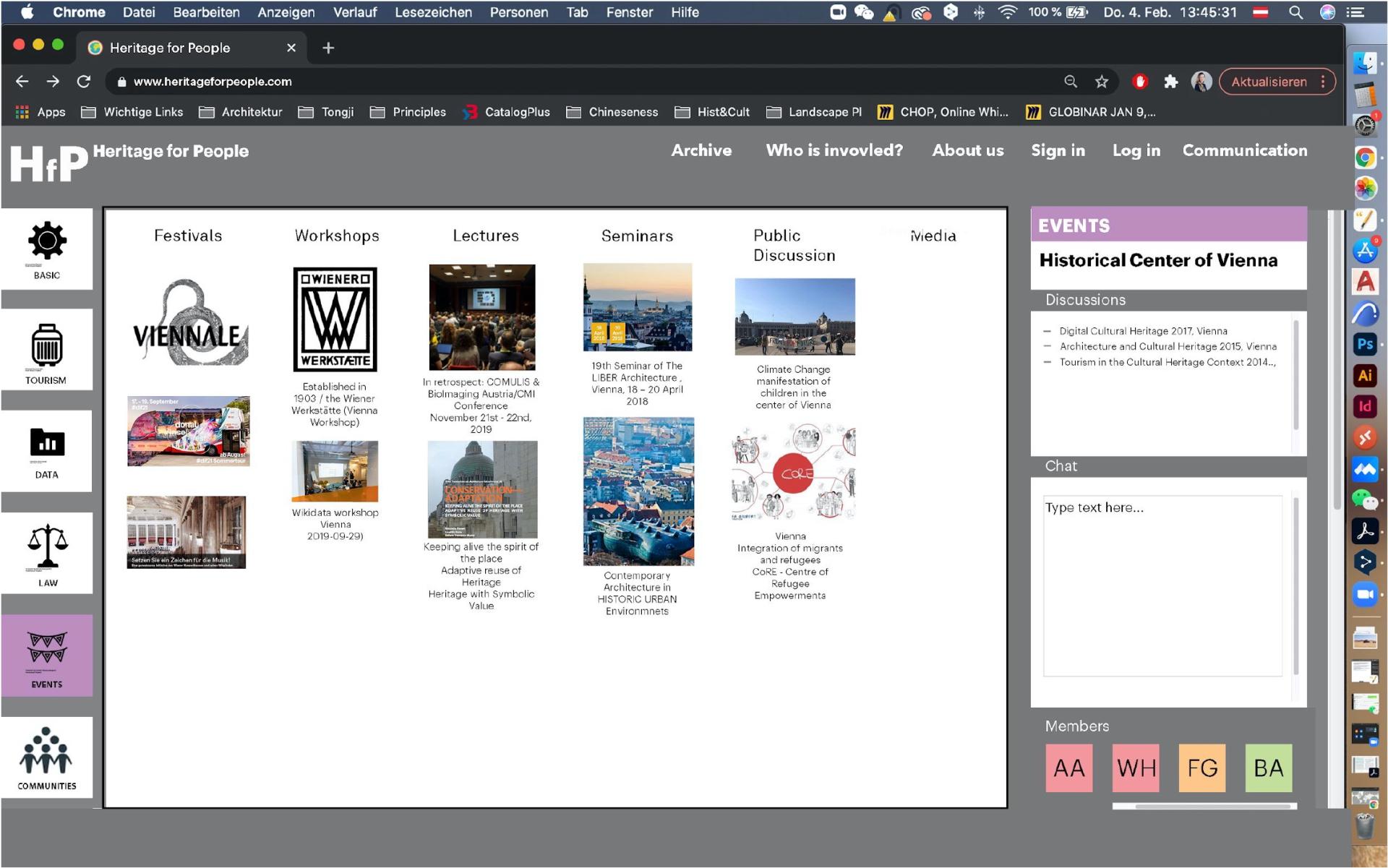Heritage for People
Basic information
Project Title
Full project title
Category
Project Description
The importance of history and the role that culture plays on the population is well defined, but we have never researched culture in a truly collective way. Data digitisation and archiving could be transformed into an exceptional tool for connecting all different users and sectors of cultural heritage into a “Global heritage” interaction and communication. The research undertaken is summarised to the development of a crowdsourcing, interdisciplinary platform, under the name “Heritage for People”
Project Region
EU Programme or fund
Description of the project
Summary
Cities, natural landscapes, rural areas, and industrial zones are part of the human built-environment and part of the World’s cultural heritage. But what about the future cities and future cultural heritage? Technology have been developed nowadays, at such point where social structures of human life are redefined and reinterpreted, according to the new technological means ,instruments and goals.
The need for digitising data and archiving could be transformed into an exceptional tool for connecting all different users and sectors of cultural heritage into a “Global heritage” interaction and communication. The research undertaken is summarised to the development of a crowdsourcing, interdisciplinary platform, under the name "Heritage for People", which includes and supports data from a simplified level to a more expert audience. Having in mind the global scene, it follows the structure of cartography and mapping in order to collect all possible heritage sites (from less to well known). Everyone could edit the mapping system by adding new heritage sites and also data (related to the community scientists, tourism industries). In a simplified schema, by clicking a site, you will reach all the available data that exists on the archive. Having in mind the future heritage sites that will be mostly identified in the urban fabric, mapping heritage is more than essential. Taking as an example of a world heritage site, Vienna’s historical centre, we try to respond to the needs of mapping the changes and the route of a historical site, that tries to harmonise to the new needs of a modern technological urban centre. The stakeholders along with the institutional help of the Technical University of Vienna will contribute to the platform / map, where over-layering data from different sectors will be collected, giving a holistic approach to each cultural site. Communities along with the University will be both part of this effort: archiving the collective memory.
Key objectives for sustainability
We have seen during the last decades, a rapid urbanisation, where population, building growth and expansion, pose a significant risk for losing cultural and natural resources, part of our heritage and history. Taking the financial scope of this issue, cities are many times an important core for development, where a certain need for heritage conservation is raised, not only for the essential role of World history and culture but also to contribute dynamically and collectively to the Urban Revitalisation, the local financial growth and the sub coming economic development. Following the aforementioned thoughts, the proposed platform is based on the need for Cultural Heritage to be opened to the public discourse and the ever-increasing influence of IT into all aspects of social life. The crowdsourcing platform consists an interactive and collaborative medium with a high-end technological structure, which supports augmented and virtual reality scenes, aiming at bringing efficient results and improving the perception of the urban fabric, reaching the detail of historical street patterns. It is often precisely these features that give to the city it’s unique character and “provide the sense of belonging that lies at the core of cultural identity”. Each site on the map will include information according to the visitor. In a simplified schema, by clicking a site, you will reach all the available data that exists on the archive. The platforms aims to raise awareness and inform the public through interaction trying to link and bridge the gaps between:
- Experts/scientists and the crowd
- The local problems and the public authorities
- The communities and the industries (constantly increasing efforts to achieve a public voice)
- Cultural heritage and the possibility for new educational forms through Information Technology
- Cultural heritage and the subsequent collective memory
Key objectives for aesthetics and quality
The importance of history and the role that culture plays on the population is well defined, but we have never researched culture in a truly collective way. There is no source of information that provides a central overview of the psychological, sociological, morphological and economical value of all cultural heritage worldwide. Thus, the public often does not identify the value of what remains of an old metro station destroyed and therefore can hardly appreciate it - maybe except for the functionless facade, which might be preserved as a faint reminder of the past. In an increasingly urbanised world, new generations hardly recognise the value and existence of rural and natural protected areas. Following the need for cultural awareness, the new pandemic era brought on the surface of the public discussion the role and the tools which technology can offer to our lives, and especially into the cultural heritage field. Trying to answer the question, how cultural heritage responds to the new and future needs of societies?, there is a certain answer, related to networking and bridging the gap between the several parts that constitute the new globalised society and the notion of cultural heritage relatively. The essence of the Outstanding Universal Value is changing as the new technological tools are developed in such a way to fulfil the new needs of the human relationships. Cultural heritage is based on human interaction and as the latter is changing forms during the years, cultural heritage needs to respond and develop the next steps of interaction into the future IT field. Aesthetics, is part of the human perception, social structure and history. Many valuable buildings and landscapes are in danger and thus future cities should be conceived as part of the historical process, not avoiding to state their past. In this context, there is no such source of data, that provides a central overview of the actual value of a city, a fact that the platform tries to approach.
Key objectives for inclusion
The platform/map, will start with the basic info and it will be built up by adding data from communities. Anyone can search for a location of historic sites, see their uploaded data and contact them. This will be a very helpful tool to network and connect industries and communities working on similar issues and also share their knowledge with the wider public. The platform will not only store historical information but also present current events. Through different filter options, everyone will be able to sort different types of information and happenings. Having a good map is essential to find the treasure, even more so today, if a map can be found in digital format, easily upgradeable and more predisposed to its easy and immediate consultation. For this reason, at the basis of our idea, we place the importance of offering an efficient and precise global mapping of the protected cultural and natural heritage, from the most known to the least known. This platform will be supported by contemporary geographic information (GIS) and digital mapping tools, providing accurate representations of a particular area, specifying in detail information supported by the Global Positioning System. This will be done through the creation of a global computer archive, based on the collection of geo-referenced data, which can be used not only for cognitive and informative purposes, but also to conduct statistical analyses for the tourism industry and at the service of the scientific community. The underlying concept is that mobile functions, such as geolocation and real-time interaction, can be used to provide personalised cultural content, up-to-date, interactive and real-time, enabling more active cultural involvement, helping to broaden opportunities to learn more about cultural heritage and provide a cultural experience adaptable to the interests, tastes and habits of the user. It will therefore aim in creating a sense of belonging, central to form a cultural identity.
Innovative character
Although the notion of a historical monument and its perception have changed over the decades, the importance of preserving, transmitting and promoting culture, through the active cooperation of the community, has certainly not changed. For this reason, the project proposes an expansion of the concept of “cultural heritage” in tangible IT terms, through the creation of an open data source that allows worldwide sharing. It is a digital guide that promotes the preservation of culture, strengthening open IT systems for the promotion of cultural heritage resources that produce knowledge through public sharing. Open data source offers free access to all descriptive information related to what is identified as cultural, natural and landscape heritage including:
- various heritage documentation and study application under geographical criteria. (province and municipality with interactive map)
- immovable heritage database combined in different parameters as provinces, municipality, historical period, ethic groups, etc.
- movable heritage database, information about architectures and also paintings, sculptures, natural areas and its characteristics.
- intangible heritage database, main information grouped in thematic categories as festival, food and form of expression
The new Open Data platform could collect all cultural heritage data around the world and make it accessible for further research and the public. Public action, awareness and knowledge distribution is needed for the future cities and future cultural heritage. A societal contribution to prevent the destruction of further historical substance. Mapping the different historical sites and the cultural significance of the “unknown” will provide an opportunity to build a global interest to the public and future generations. On a scale where everyone can contribute his collective memory and narrative story, through all different aspects of social life, will contribute to the future essence of cultural heritage.



